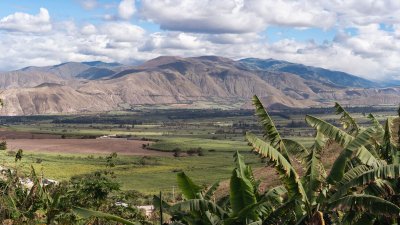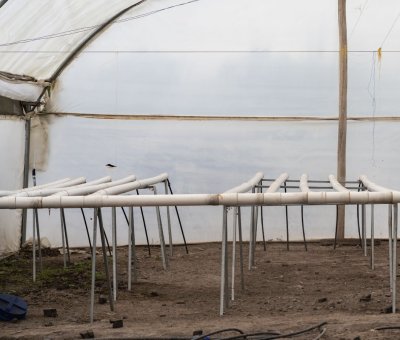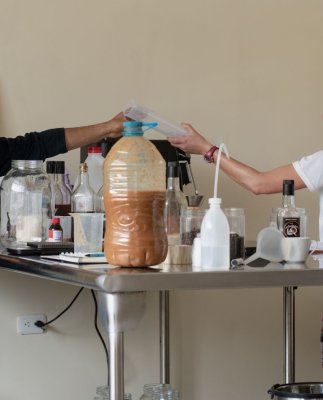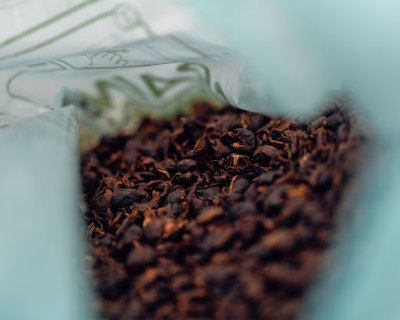My Real Eye for Service

Looking out from a small pueblo in Imbabura Province.
I’ve been given the opportunity of using my real eye, my camera, for my service placement. There’s a quote I love (that I can’t remember who or how it is said so it’ll be butchered) that goes like this, “we often can’t see unless it is in a frame.” My service organization has asked me to take photos and videos of the communities/projects they are currently working on. The organization helps to organize, plan, budget, and grow communities and their business efforts. They currently have around six projects with a variety of products such as essential oils, coffee products, lettuce farming, and others. This means that I’m able to travel to these communities, see how they are working towards having a source of income other than their jobs, and show the progress they are making.
Take the photo from above for example. I was amazed the first time I traveled to this small pueblo just an hour away from Ibarra. The views were breathtaking. I saw beautiful mountains, green fields, and blue skies, with the sun warming my skin while the breeze cooled me down. Although what I first saw was beautiful, this image would explain the situation of the community here. The small community you see in the first photo is starting to grow lettuce. Specifically, aqua-farming lettuce. A group of women has taken it upon themselves to build a greenhouse, set up PVC pipes with holes, and get a generator to pump water in order to start. The reason it has to be aqua-farming is because of space. All the fields you see in the photo above are sugar cane. All the sugar cane is owned by 2 or 3 owners. There is no space left or available for a community to grow what they need. Their houses are the size of 3 sheds smushed together. The only jobs they have are to work for these sugar cane plantations because going to the city is too far and too unreliable. Aqua-farming lets them farm more within the limited space they set aside for a community greenhouse.

The PVC pipes above are for aqua farming.
The second community we visited was farther than the first, after passing crumbling cliff roads and lots of off-road terrain in an old truck, we made it to a coffee compound where multiple coffee farmers shared the facility to grind, roast, and bag their beans. That side of the business is running smoothly. What my organization is trying to do is find more products within the waste of the coffee fruit pulp and the shells of the beans in order to maximize profits and bring more work, specifically for women, to the community.

Employees experimenting with sub-products of coffee.

Dried coffee bean shells for experimenting with making coffee tea.
While we were in the community with the coffee project, I had the opportunity to try one of the products they had been working on which was chocolate. One was like a Reese’s style chocolate cup but instead of peanut butter, it was a creamy caramel in the middle. It was simply delicious. The other was a chocolate-covered coffee bean which had a strong kick of coffee but was so good that everyone was grabbing one throughout the day. The experiment they were conducting was to find the right proportions of bean shells to make a coffee-flavored tea. The first couple of batches were really acidic, almost like lemon tea. By the end of the day, the proportions were figured out, and adding a little caramel made it a delicious treat. Some other products they would like to work on are coffee liquor, coffee soap, coffee candles, a type of syrup, and coffee cookies. All of these would be made from the waste of coffee.
My first few weeks of service opened my eyes to a lot. Not only did I see these communities trying to find alternative sources of income, but I also witnessed the workers of FEPP exhausting themselves juggling these six projects, dealing with the politics and headaches of money/scheduling, and working overtime due to the long driving distance between communities. It’s an incredible effort and sometimes they try to push schedules quicker but communication and availability of personnel can prevent a smooth agenda. Either way, I have the opportunity to see a lot of beauty, not only in the landscape but in the people in each community.

Flowers from outside the local church in the village where one of the projects is at.
Joshua G.




